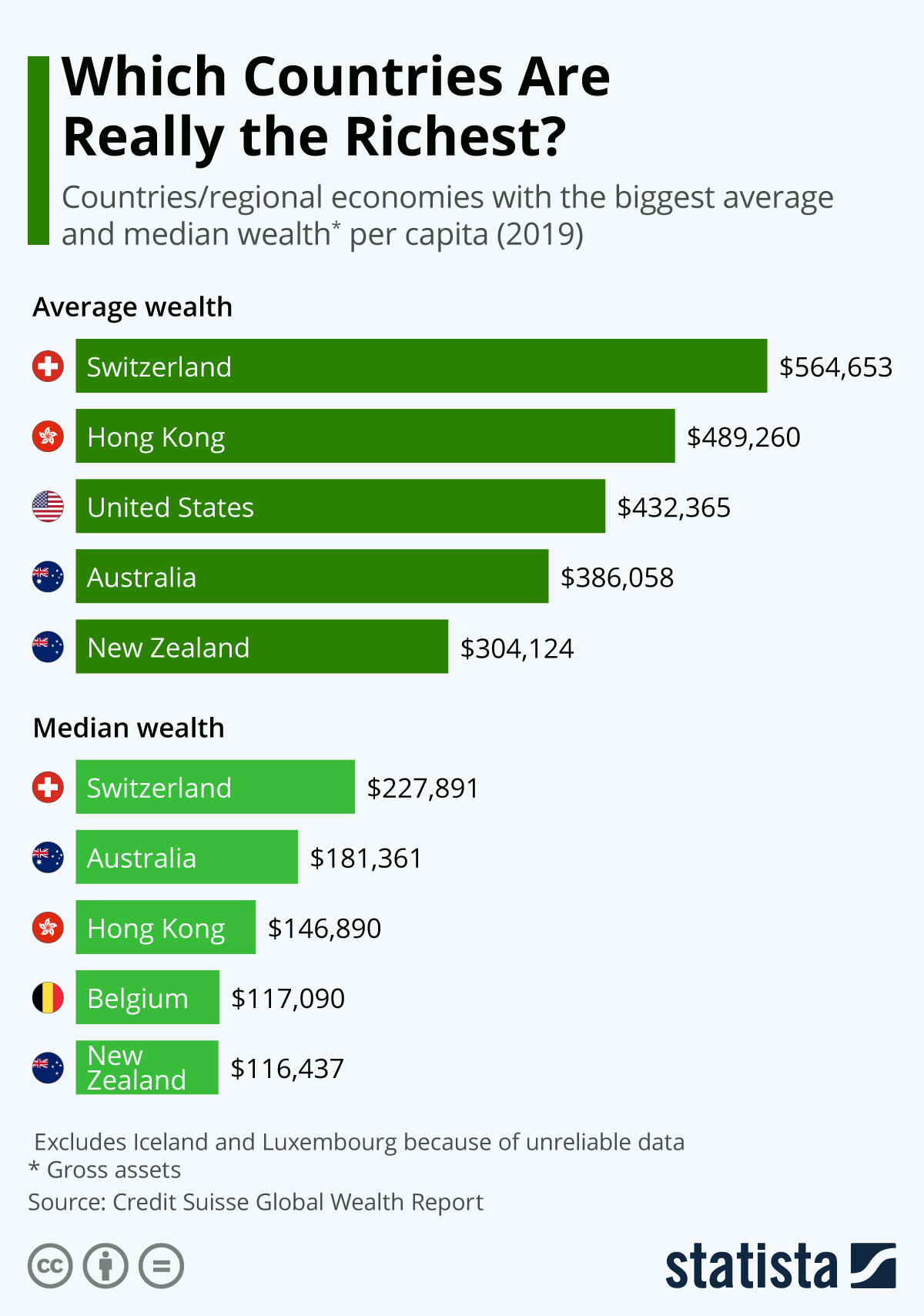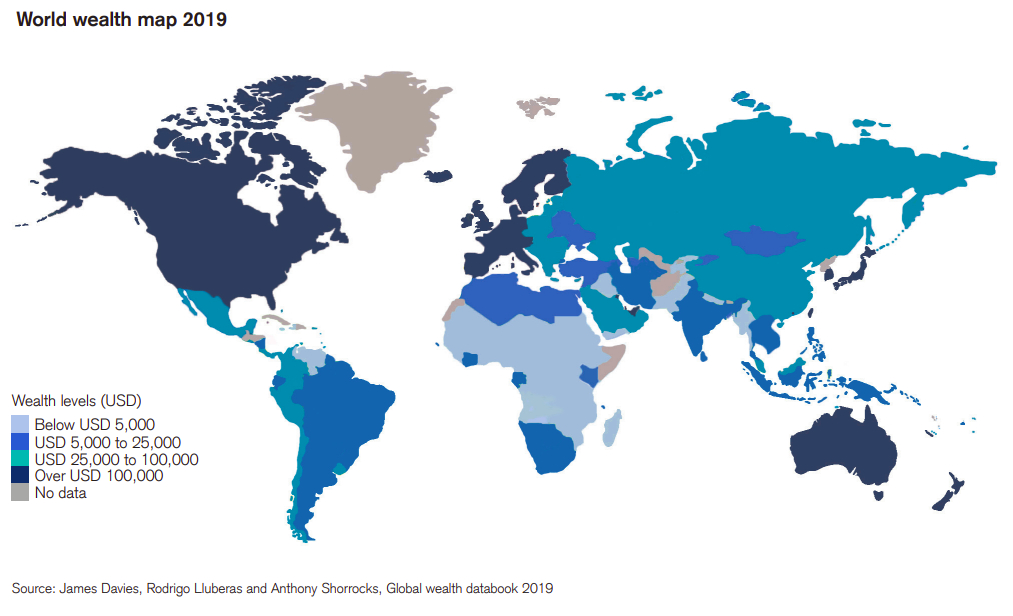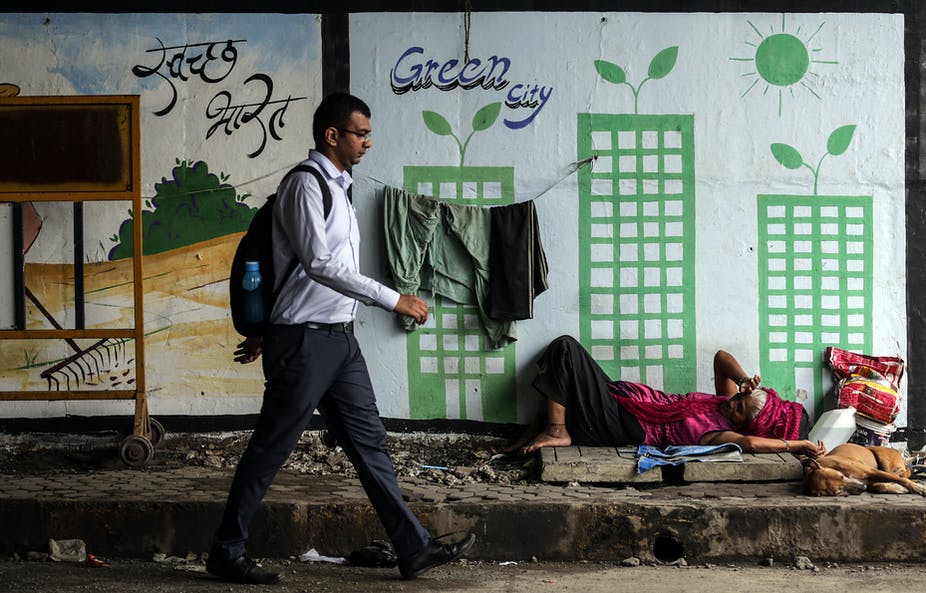On average, the adult citizens hailing from these countries are the wealthiest in the world.
These countries recorded the highest wealth per capita in 2019, according to the data of Credit Suisse from their recently published Global Wealth Report.
Methodology
For the measurement of wealth, gross assets were considered. Moreover, two metrics were used for the computation: the mean and the median wealth per capita.
The mean (or average) wealth per capita is sensitive to extreme values. The presence of an exceptionally high or low value of gross assets will pull the value of a country’s wealth per adult towards its direction. Consequently, multiple extreme values can distort this measure.
Meanwhile, the median wealth per capita is less sensitive to such values. This makes it more reliable in seeing the real central value of a country’s wealth per adult. However, the downside of the median is precision, something the mean can offer since it uses more information for its computation.
Given these pros and cons, the use of these metrics in conjunction is a better way of gaining insights on how wealth is distributed in a country instead of just looking at them individually.
Highlights
For both metrics, Switzerland has the wealthiest adults, with a mean wealth per adult of USD 564,653 and a median wealth per adult of USD 227, 891.
In terms of the mean wealth per adult, Hong Kong comes in second place (USD 489, 260). However, it is only in third place if the median wealth per adult is considered (USD 146, 890).
This means that in Hong Kong, there are a lot of adults belonging to the high-income bracket which led to the spike of its mean wealth value.
However, this also means that the distribution of wealth in Hong Kong is skewed, implying that the average adult is not really as rich as the mean figure would suggest. This is reflected in the comparatively low median value.
However in terms of the median wealth per adult, Australia is in second place (USD 181, 361). The country only ranks fourth in terms of the mean wealth per adult (USD 386, 058).
This means that there are proportionally less adults in the top tier of the wealth pyramid in Australia. This also means that wealth is more evenly distributed among adults in the country compared to Hong Kong.
From the map below, it can be seen that the concentration of wealthy adults is in North America, Europe, and Oceania. Meanwhile, the least wealthy adults are located in Africa.
Globally, the wealth per adult reached USD 70,850 in 2019, a record-setting figure. This follows an increasing trend which began in 2008, around the time following the global financial crisis.
In terms of the distribution of wealth, the top 1% of all the adults in the world collectively own 44% of global wealth. While according to Credit Suisse the inequality has been experiencing a downward trend in recent years, this is still an undeniable disparity in wealth.












